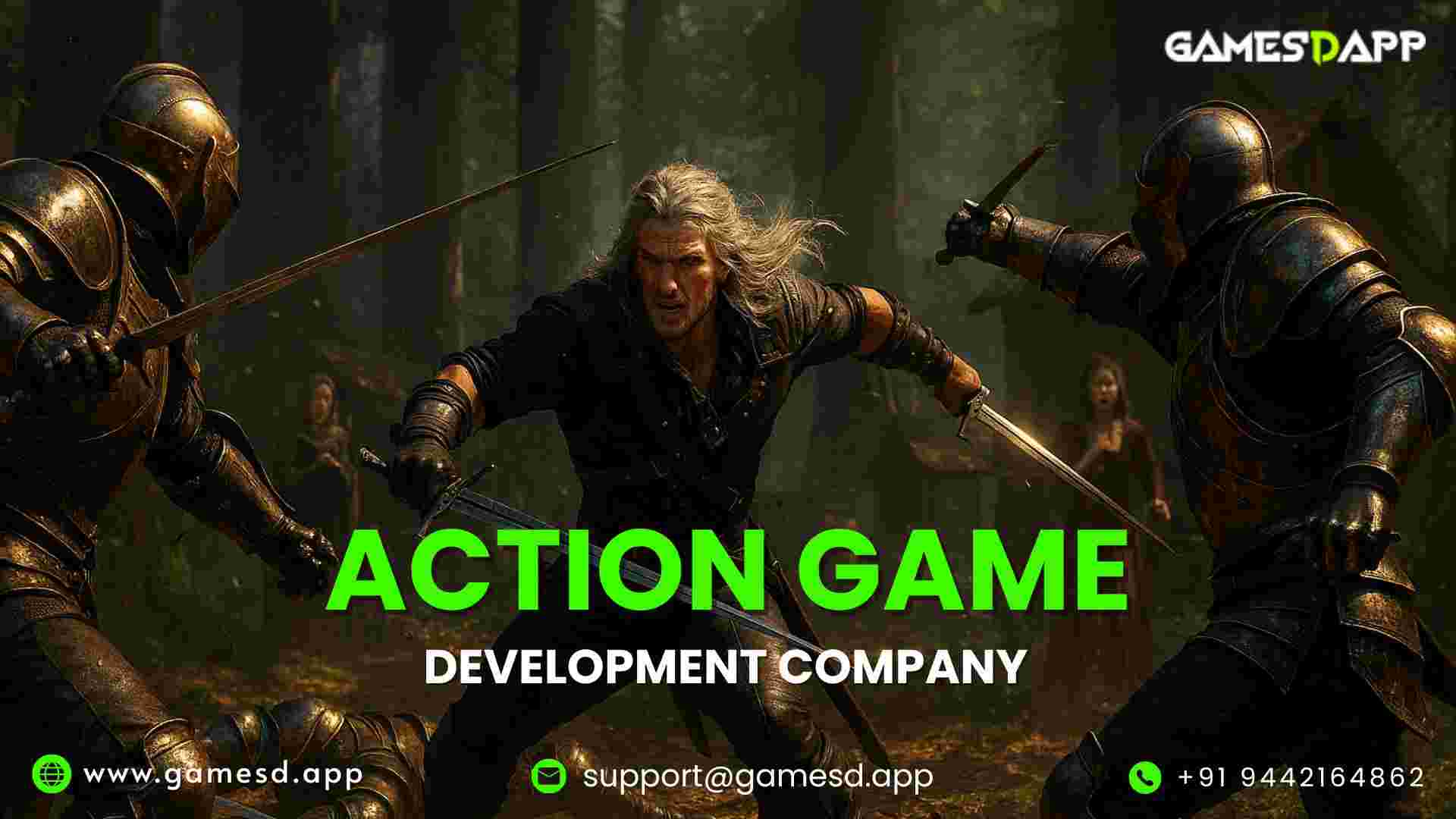In the fast-paced world of gaming, Action Game Development has become the heartbeat of the industry. From explosive combat sequences to adrenaline-packed storylines, action games dominate global charts and attract millions of players daily. With the rise of cross-platform play, cloud gaming, and immersive technologies like VR, the demand for studios that can deliver high-quality action experiences is higher than ever.
Understanding how these games are built, the tools, technologies, and techniques involved, gives us a clear picture of why they continue to lead the gaming revolution.
What Is Action Game Development?
At its core, Action Game Development is the process of designing and creating games that emphasize physical challenges, fast reflexes, and strategic combat. Unlike puzzle or simulation games, action games keep players engaged with intense gameplay mechanics — whether it’s battling enemies, navigating dangerous environments, or completing time-sensitive missions. This genre demands a careful balance of mechanics, visuals, and storytelling to keep the adrenaline flowing.
Developers focus not only on smooth gameplay but also on creating characters, enemies, and levels that feel alive and dynamic. This is why action games often push the boundaries of graphics, AI, and physics engines compared to other genres.
Core Elements of Action Game Development
Gameplay Mechanics and Combat
Gameplay mechanics and combat systems are central, as smooth and responsive controls ensure players stay engaged in high-intensity battles.
Characters and Environments
Characters and environments must be crafted with precision, creating worlds that feel alive and dynamic.
Difficulty and Progression
Another vital aspect is progression and difficulty balance. If the game is too easy, players lose interest; if it is too challenging, frustration takes over. Striking the right balance requires constant testing and fine-tuning.
Essential Tools for Action Game Development
Game Engines
Game engines like Unity, Unreal Engine, and Godot provide the foundation for real-time rendering, smooth physics, and scalable development. These engines also support 3D action game development, giving designers the ability to build cinematic visuals and interactive combat systems.
Animation and VFX
Animation and visual effects tools such as Blender, Maya, and Houdini help create realistic characters, lifelike combat moves, and immersive environments.
Testing and Optimization
Testing and optimization platforms are equally important, as action games demand stable frame rates and seamless performance across devices. Without this combination of powerful tools, delivering a competitive action title would be nearly impossible.
Technologies Powering Action Game Development
Artificial Intelligence
Artificial Intelligence integration plays a crucial role in designing smarter NPCs and adaptive combat scenarios, making every battle unique.
Physics Engines
Physics engines ensure realism by powering lifelike destruction, movement, and environmental reactions.
Cross-Platform and VR
Cross-platform development and cloud-based scalability allow action titles to run smoothly on PC, console, and mobile. The industry is also witnessing rapid growth in VR action game development, where immersive combat experiences are redefining how players interact with digital environments.
Techniques in Action Game Development
Level Design
Level design strategies guide players through challenges, rewards, and story arcs while keeping the pace engaging.
Multiplayer Integration
Multiplayer integration adds another layer of excitement, making real-time battles and cooperative missions possible.
Monetization Models
From premium titles to free-to-play models with in-game purchases, developers must find the right balance between profitability and player satisfaction. Increasingly, custom action game development is becoming popular, where studios build tailor-made experiences to match a brand’s vision or niche audience.
Challenges in Action Game Development
Performance Optimization
High-speed gameplay demands consistent frame rates and seamless transitions across all devices.
Player Retention
Retaining players requires frequent updates, fresh content, and balanced difficulty curves.
Security
Security is equally vital, particularly in multiplayer game development, where cheating and exploits can damage player trust.
Future of Action Game Development
Immersive Technologies
Virtual reality and augmented reality are reshaping how players experience combat, bringing immersive, first-person interactions into mainstream gaming.
Blockchain and Play-to-Earn
Blockchain integration and play-to-earn models are introducing new ways for players to engage with action titles while also creating revenue opportunities.
Generative AI and Next-Gen Development
Generative AI is expected to revolutionize design by automating aspects of storytelling, level creation, and even character behavior. As these innovations continue to merge, we are entering the era of next-gen game development, where action games will be more realistic, interactive, and customizable than ever before.
Why Choose GamesDapp for Action Game Development?
GamesDapp is a trusted Action Game Development Company with expertise in building 2D, 3D, VR, and metaverse-ready action titles. Our team blends cutting-edge tools with creative storytelling to deliver games that are fast, scalable, and unforgettable.
Whether you need a high-performance multiplayer, a cross-platform action game, or a blockchain-powered experience, we’ve got you covered. With proven results across global projects, we turn your vision into reality.
Ready to create your next action-packed game? Contact GamesDapp today and let’s build the future of gaming together.




